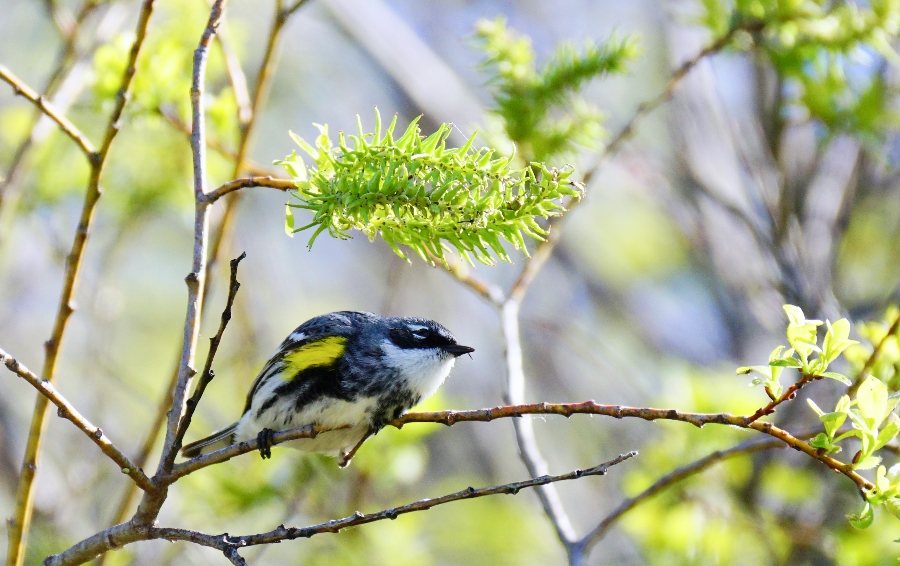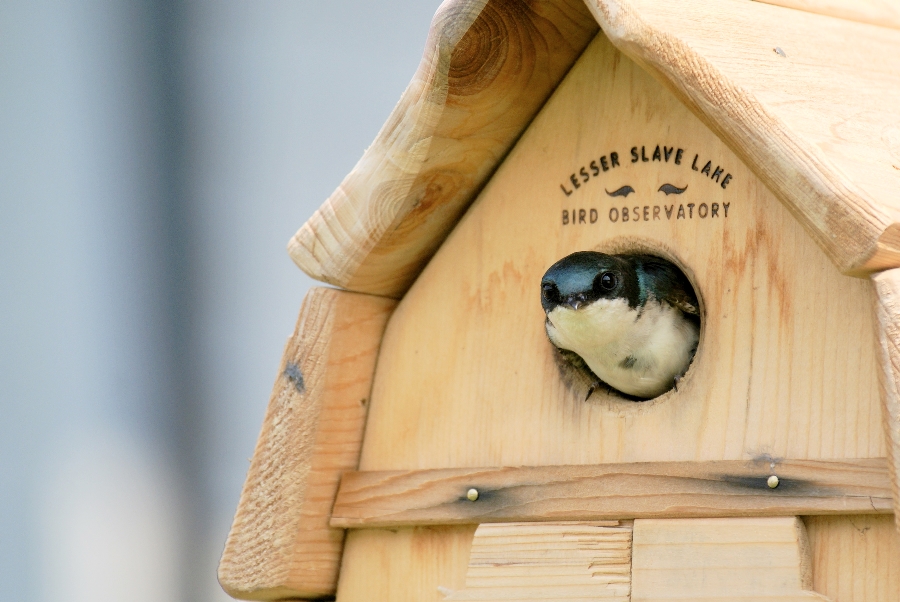It has been another ho hum week at the bird observatory. Although a few new species like Swainson’s thrush, black-and-white warbler, and western tanager have shown up, the forest and skies are still pretty low in bird diversity. Banding has also been slow, we only banded 35 birds this week which finally pushed out spring total to over the 100 mark… Considering we started a month ago, just passing 100 is a pretty shallow victory. There is still plenty of time for things to turn around though, and one good thing about the slow start is that it has given us lots of time to make sure the new lab is organized and everything is set-up so that when we do catch lots of birds we will be ready to process them efficiently. We have also kept busy making sure all the nets are in good repair so that we don’t have birds escaping through holes. Come at us, birds, we are now ready.

Myrtle warbler checking the undersides of willow flowers for insects.

Even this young white-tailed deer buck thinks our totals suck…
Aside from myrtle warblers and blackbirds, the only species that has really been moving in large numbers are tree swallows. Tree swallows are great little birds; they are an aerial insectivore, which means they hunt and catch insects while flying and they will readily use a nest box. This makes them an excellent backyard bird. It doesn’t matter if your yard has trees or no trees, if it is shady or very sunny, if it has grass, weeds, or gravel for a lawn, if you put up a box, swallows will come. And if you have swallows in your yard they will eat insects. Lots and lots of flying insects. A single swallow will eat around 60 insects an hour for every daylight hour. During the height of summer that can add up to well over a 1000 mosquitoes, blackflies, midges and other pests every single day. Now imagine that by setting up a box you could attract two hungry swallows and they will produce an average of 4 hungry chicks – all the sudden that’s very effective natural insect control. The only tricks to getting swallows are to make sure that house sparrows don’t take over your box and to avoid putting boxes too close together. To keep your box free of unwanted house sparrows, which are a non-native species, simply make sure you take it down in the winter and then only put it up again early May when swallows are starting to return. If sparrows still try to move in, block the entrance for a few days before trying again. You can also buy special boxes designed just for swallows with an oval entrance that house sparrows can’t fit through. Putting your box on a tall pole and away from trees and thick foliage also helps. The second trick has to do with how territorial swallows are. Swallows like to be sure they have a decent chunk of sky all to themselves. If you put up two boxes that are too close together you will likely still get one pair, but they will prevent any other pair from using the second box. Keep boxes at least 30 metres apart for optimum results.

Tree Swallow poking its head out from its nest box.
